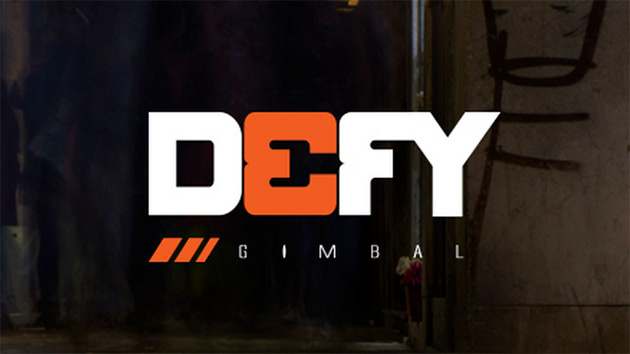If you were scoping out camera gear at NAB, you probably saw the Movi from Freefly. Described by early users as a revolutionary handheld camera rig, the Movi is a three-axis gyro-stabilized handheld camera gimbal that keeps your camera steady no matter which way you end up turning the rig. The first Movi will hold up to a 10-pound payload and costs $14,995, and bigger and smaller models are said to be coming. Freefly already has experience with multi-rotor camera platforms, and power DSLR user Vincent Laforet quickly aligned himself with the Freefly team and spread word of the product far and wide. However, except where there's something especially clever and patentable about Freefly's designs, there's nothing stopping other companies from releasing competing products.
It looks like the first of those competitors may be the Defy Gimbal, which is being touted by Missouri-based digital media company Relentless. Relentless was apparently at NAB this year with a two-axis prototype of the product, but now says it plans to deliver a silent three-axis carbon fiber gimbal suitable for cameras ranging from the Red Epic on the high end down to the Blackmagic Pocket camera and the GoPro on the low end. In a video posted to the Relentless website, company CEO Drew Janes describes a silently operated handheld gimbal with brushless motors and plenty of options for building out a full-on camera rig. "We build custom multi-rotors right here in our shop," he insisted. "We get gimbals." (Watch it below.) Pre-orders will be taken at the company's new website, www.defygimbal.com, for estimated delivery in June at a what Janes promises is "a price point you can actually afford." The two-axis version Janes was showing at NAB was going to be sold for around $1800, so a three-axis model with the ability to hold a wider variety of cameras will presumably carry a bigger price tag.
We probably won't see too many early adopters canceling their Movi pre-orders on this news. For one thing, we haven't yet seen the Defy Gimbal in action. The Relentless team needs to create a demo video that proves they've hit their marks before competition heats up. For another, Freefly says it really has developed some unique technology for the Movi. The company has applied for patents on "Majestic Mode," in which the gimbal monitors the camera operator's handle movements and converts them on the fly into stabilized pans and tilts, allowing framing to be accurately controlled and maintained. Also patent-pending is the translation-compensation system that allows the Movi to automatically adjust the camera angle hundreds of times a second to maintain a consistent frame, as well as the "noise filter," which allows the user to dial in the amount of shaky-cam he or she prefers so the gimbal can leave exactly the right amount of instability in the image, no matter how roughly the camera is being handled. Freefly has also developed proprietary control algorithms that use GPS data for acceleration correction on cars or helicopters.
So it looks like the Movi will set the gold standard in this niche, and may become a popular rental item. It's slated to ship in the third quarter. But if you like the idea of a stabilized handheld rig without much in the way of fine control, the Defy Gimbal may suit your needs at an attractive price point. And if that doesn't work for you either, you can wait a few months and see if someone else does it better.
Did you enjoy this article? Sign up to receive the StudioDaily Fix eletter containing the latest stories, including news, videos, interviews, reviews and more.

How can you characterise the Defy gimbal as not having fine control if it hasn’t been launched yet?
Saying that Movi (or any piece of new yet to be released kit) will create a gold standard in what you agree is a fast moving product field is an odd thing to say.
We should remember that the lightweight Canadian made “Flight Head” has been around since 2009 and one of the gimbals from a remote helicopter was used years before that in hand held mode and attached to a steadycam.
Movi and numerous others are utilising non proprietary technology adding some secret sauce and commercialising it. Well done and good luck to all who enter this demanding segment of our industry.
The same thing is happening to larger gimbals with at least three new players with prototypes to challenge cineflex.
From the buyers prospective, it is prudent to base buying decisions on demonstrated performance rather than a manufacturers hoped for specification.
mike brennan
You’re right — that was essentially speculation on my part based on what the company was showing at NAB, which looked like a simplified version of the Movi, as well as what Freefly has written about the capabilities of their product (and what I’ve heard firsthand from early users). But nobody has actually shipped units — so anything could happen.